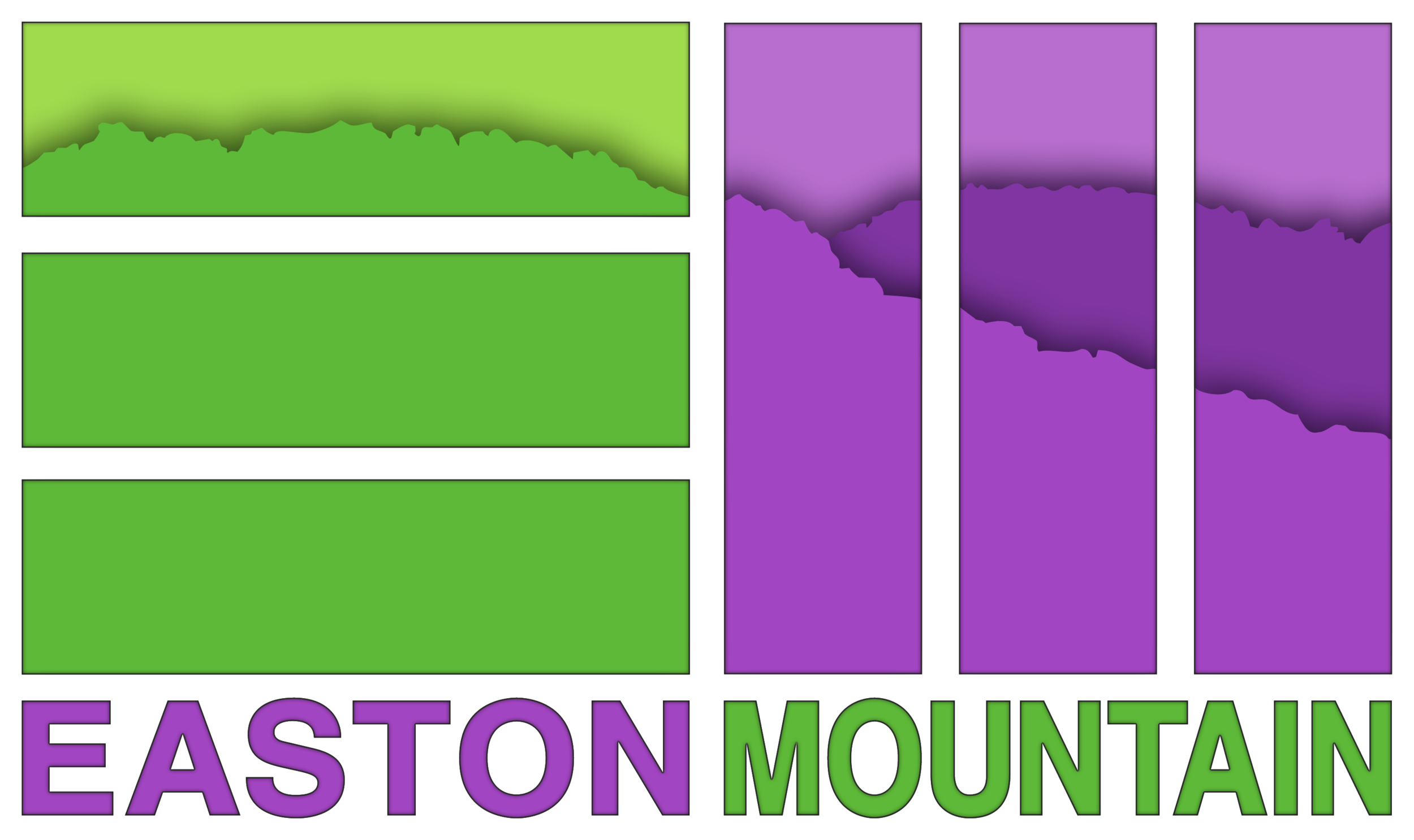Making Challah
We are striving for the Easton kitchen to be a learning kitchen, where all of our food stories and skills are honored and practiced. For example, during this winter’s Easton Mountain Leadership Academy (EMLA), JJ Sanchez— an EMLA alum who works on Team Kitchen for some retreats— led us all in a bread-making workshop to create golden loaves of challah.
Challah is the traditional loaf of the Jewish Sabbath, famous for being rich, eggy, and braided. The results look gorgeously complicated—yet we had great challah triumphs up here! And you can too! Just follow the detailed recipe below. Before making any recipe, read the entire recipe through.
Wash your hands.
Assemble all your equipment and ingredients.
Then wash your hands again.
Challah!
3 ¼ cup unbleached all-purpose flour, plus more for dusting work surfaces
2 ¼ teaspoons instant yeast (one packet)
¼ cup sugar
1 ¼ teaspoon salt
3 large eggs – one of these separated, reserve the white for the egg wash
4 tablespoons unsalted butter, melted
½ cup of water at room temperature; plus 1 tablespoon for the egg wash
1 teaspoon poppy or sesame seeds (optional)
- Separate one of your eggs. Keep the yolk for the dough. Beat the white with a tablespoon of water in a small bowl. Store in the fridge for brushing on the loaf later.
- Grease a large wooden or glass bowl with butter or oil. This is where your dough will rise, so be sure it has enough room to double, and rising dough does not really like metal bowls.
- In another big bowl— one big enough to comfortably knead in— whisk together 3 cups of the flour (save the final ¼ cup of flour to work in later), yeast, sugar, and salt.
- In a smaller bowl or pitcher — we use a super-big measuring cup—beat together 2 eggs, 1 egg yolk, ½ cup of water, and the melted butter. Your butter wants to be melted but not hot; if it is hot then it will cook your eggs!
- Using a wooden spoon, stir the wet ingredients into the dry until they come together.
- Now get your hands in there! - Knead the dough until it is soft and satiny; you will feel the texture change in your hands. Add in the additional ¼ cup of flour bit by bit as you knead. Stay with it – kneading by hand, this can take 10 minutes or more. To knead dough in the bowl, hold the bowl in one arm (or on the table) and fold the mass of dough in half toward you then push it away from you with the heel of your hand against the sides and bottom of the bowl. Repeat: turning and folding and pushing the dough again and again.
- Turn out your dough into the greased bowl and give it a rotation to coat with fat. Cover with plastic wrap. Leave it alone someplace warm to rise until doubled in size, about an hour and a half or two hours. If you want to begin your challah the day before to bake and serve in the morning, you can make it up to this point and do this first rise in the refrigerator overnight.
- Uncover and press down your dough to deflate it. This is called “punching down” the dough, yet you can be pretty gentle about it. Cover and let rise for a second time until doubled in size, about 45 minutes to an hour.
- Time to braid your dough. Prepare a work surface by lightly flouring it. Or we worked right on our lightly greased parchment lined baking trays.
- Divide the dough into two pieces, one about half the size of the other. Divide each of these two pieces into three equal pieces.
- For the bottom braid, using the larger pieces, roll three dough ropes about 16 inches long and 1 inch in diameter. Line the ropes of dough up side-by-side, and pinch one set of ends together. To braid: lift the furthest right rope and cross it over the center rope then lift the left rope and cross it over the center rope, and repeat this process until you reach the ends. Pinch the ends together and tuck them under the loaf. Transfer to your baking tray if you are not there already.
- Using a pastry brush, paint this loaf with your reserved egg white & water.
- Braid the second, smaller loaf, and place it on top of the first.
- Loosely cover the loaf with plastic wrap— spraying with Pam or otherwise greasing the plastic will ensure it does not stick—and leave it to rise for half an hour or so, until it grows by about a third and looks merrily puffy.
- Heat the oven to 375.
- Brush the entire loaf with egg wash, and sprinkle with poppy or sesame seeds if you like.
- Bake the loaf for 30 to 40 minutes or until golden brown.
- Cool completely before slicing. This is the hardest part of the directions.
- You would be very wise to make two loafs because challah French toast is one of the best breakfasts on earth.
You can be a part of Easton's learning kitchen. Check out the retreat Eat EM (April 1-3, 2016).
_____________ *Adopted from Baking Illustrated by the editors of COOK'S ILLUSTRATED magazine


